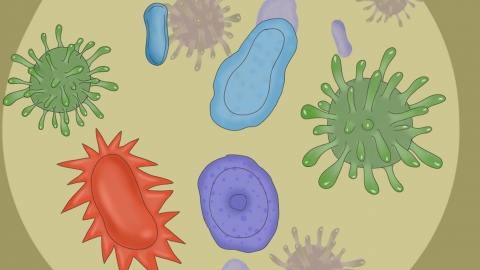Why Do Children Have Strokes?
Children may suffer from stroke due to vascular developmental abnormalities, hypercoagulable states, infectious vasculitis, congenital heart disease, or cerebral vascular malformations. If any abnormalities are noticed, timely medical consultation is recommended. Detailed explanations are as follows:

1. Vascular developmental abnormalities: Incomplete development of cerebral blood vessels during the embryonic period and structural defects in vessel walls may lead to abnormal blood flow and increase the risk of stroke. Regular cerebral vascular examinations are necessary to monitor vascular development and enable early detection and intervention.
2. Hypercoagulable state: Imbalance of coagulation factors or abnormal platelet function in children may increase blood viscosity, making it easier to form blood clots that block vessels and cause stroke. Attention should be paid to adjusting dietary structure, reducing intake of high-fat and high-sugar foods, and increasing water intake appropriately to lower blood viscosity.
3. Infectious vasculitis: Vascular inflammation caused by pathogens such as bacteria or viruses may lead to thickening of the vessel wall and narrowing of the lumen, affecting cerebral blood supply and causing stroke, often accompanied by symptoms such as fever and headache. Doctors generally use medications such as sodium penicillin for injection, ceftriaxone sodium injection, and methylprednisolone sodium succinate injection to improve cerebral blood circulation.
4. Congenital heart disease: Abnormal cardiac structure leads to hemodynamic changes, making blood clots more likely to form. These clots may dislodge and travel through the bloodstream, blocking cerebral vessels and causing stroke, often accompanied by symptoms such as palpitations, shortness of breath, and delayed development. Treatment may involve medications such as aspirin enteric-coated tablets, warfarin sodium tablets, and urokinase for injection, following a doctor's evaluation.
5. Cerebral vascular malformations: Abnormal cerebral vascular development leads to malformed vascular clusters with fragile walls that are prone to rupture and bleeding, or that compress normal vessels causing ischemia and stroke, often accompanied by severe headache and vomiting. Treatment may involve interventional embolization or surgical removal of the malformed vascular cluster, depending on the patient's condition.
In daily life, attention should be paid to children's growth and development, regular health check-ups should be conducted, and diseases should be detected promptly. If children show symptoms suggestive of stroke, such as abnormal limb movement, slurred speech, headache, or vomiting, immediate medical attention should be sought to avoid delays in treatment.




